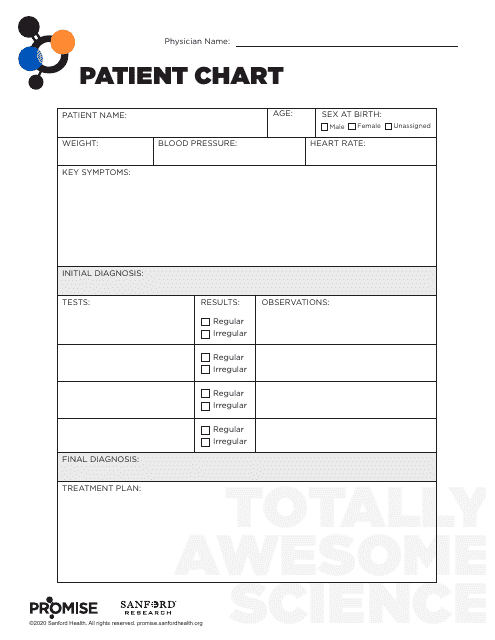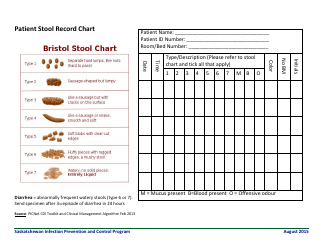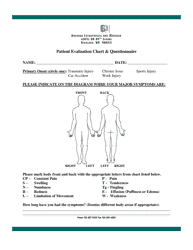Patient Chart
A patient chart, also known as a medical record, is a comprehensive documentation of a patient's medical history and health care. It includes information such as the patient's personal details, medical diagnosis, treatment plans, medical reports, test results, health progress, and notes from healthcare professionals. This record serves as a basic tool for physicians and healthcare providers, allowing them to track a patient's health status, make accurate diagnoses, and create effective treatment plans. It also ensures continuity of care among different healthcare providers.
The patient chart, also known as the medical record, is usually filed by a health information management professional or clerk. This individual is part of the medical office staff in a hospital, clinic or doctor's office in countries like the USA, Canada, India, and Australia. They are responsible for maintaining and organizing all patient records. Nurses, doctors, or other healthcare providers may also contribute to the chart by adding their notes or observations. It's essential that this information is kept accurate and up-to-date as it plays a crucial role in the patient's ongoing healthcare and treatment.
FAQ
Q: What is a patient chart?
A: A patient chart, also known as a medical chart, is a comprehensive record of a patient's medical history, diagnoses, treatment plans, and other healthcare-related information. It helps medical professionals track a patient's health progress over time.
Q: What information is included in a patient chart?
A: A patient chart typically includes demographic information, contact details, medical history, notes from physicians and nurses, medications, lab results, X-ray reports, other diagnostic reports, immunization records, allergies, and notes about lifestyle habits such as alcohol or tobacco use.
Q: How are patient charts used in the United States?
A: In the United States, patient charts are used by healthcare professionals to document, communicate, and monitor patient care. They are also used for billing, legal, research, and quality improvement purposes.
Q: What is the difference between a paper patient chart and an electronic health record (EHR)?
A: Traditional paper patient charts are physical documents stored in a clinic or hospital. In contrast, electronic health records (EHRs) are digital versions of a patient's chart that can be accessed from different locations. EHRs improve efficiency, accuracy, and accessibility of patient data.
Q: How is patient chart information kept secure and confidential?
A: In the USA, the Health Insurance Portability and Accountability Act (HIPAA) sets the standards for securing patient health information. Patient chart information is kept secure through a variety of methods, including password protection, secure networks, encryption, and strict access controls, ensuring only authorized individuals can access these records.





